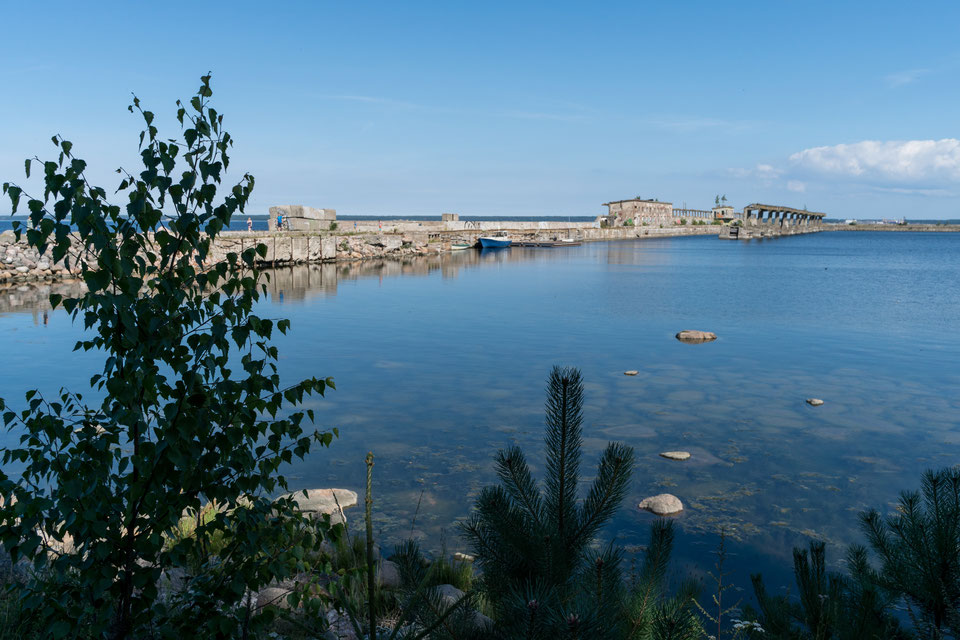"Does anyone have an idea what this is?", our Estonian tour guide asked when we arrived. We went on a day trip one hour east from Tallinn towards the Lahemaa National Park and stopped at the coast near the Estonian town of Hara. A beautiful, warm and sunny day at the Baltic Sea. Ahead of us a linear concrete structure reaching far into the sea. The area looked like an abandoned military station and in fact it was. "Something with submarines?", a participant from our group asked. "Right, but what exactly?", our guided replied. Well, I would never have guessed since I never heard of what was coming next.
This spot was strictly confidential and closed to public back in Soviet times. It was not marked on any map. It was one of only two such spots in the USSR and therefore very special. A secret submarine station at the Baltic Sea for smaller submarines doing espionage during the Cold War. But what exactly did they do there? "They used this facility to demagnetise submarines", our guided explained. "They drove the smaller Baltic Sea submarines in a special facility where they demagnetised them". First I though he was just joking because I never heard of anything like that. But after looking it up I learned about submarines being magnetically loaded on their missions due to the magnetic field of the earth. This makes them visible for radar and especially for magnetic mines and therefore they came to these facilities like once a quarter to get degaussed with huge alternating magnetic fields. The Hara Submarine Base was built during 1956 and 1958 and used until 1991 when Estonia became independent again. Today, the place really feels isolated although it has recently been bought. There was only one truck disturbing the quietness and bringing building material to set up a marina next to it. "The place looks like a rotten Soviet Acropolis with all its concrete columns", I read in a post. And this is actually quite a precise description.
Hara was used as a base for the Baltic Sea submarines during cold war. They used the smaller and shorter submarines that could easily operate in the shallow Baltic Sea. After 1991 when the Russians left, they destroyed, deployed and dismantled most of it since it was a top secret military site. Today, you can easily imagine what a huge structure Hara was like thirty years ago.There is lots of graffiti when you walk along the endless pier towards the open sea. The place became an abandoned place after 1991. Lots of concrete strained from decades of Baltic wind, snow and rain. With cement facades and rusty structures like ladders, chains and latches all over the place.
Half way down the pier you can enter a few buildings that are also covered with graffiti. The old floor resembles a chess board that is still visible and you really need to whatch your steps inside. There is a huge Soviet seaman posing over the entrance door giving a strong feeling of former times. This actually is the only original painting left there.
Walking further towards the open sea you meet the 'Eesti Klassika' - a fairly new graffiti looking like an Estonian popeye combined with a modern bodybuilding sailor. There a more structures that are not connected to the pier and therefore you would need a boat or bravely swim to check them out. We spent a good hour there and really enjoyed our time.
Hara Submarine Base was just one of our stops during that day in Lahemaa National Park but a visually stunning one that is worth your time. If you want to check my Estonia photo gallery click here. You can also check my Linnahall blogpost that features another Soviet concrete paradise.




















Write a comment